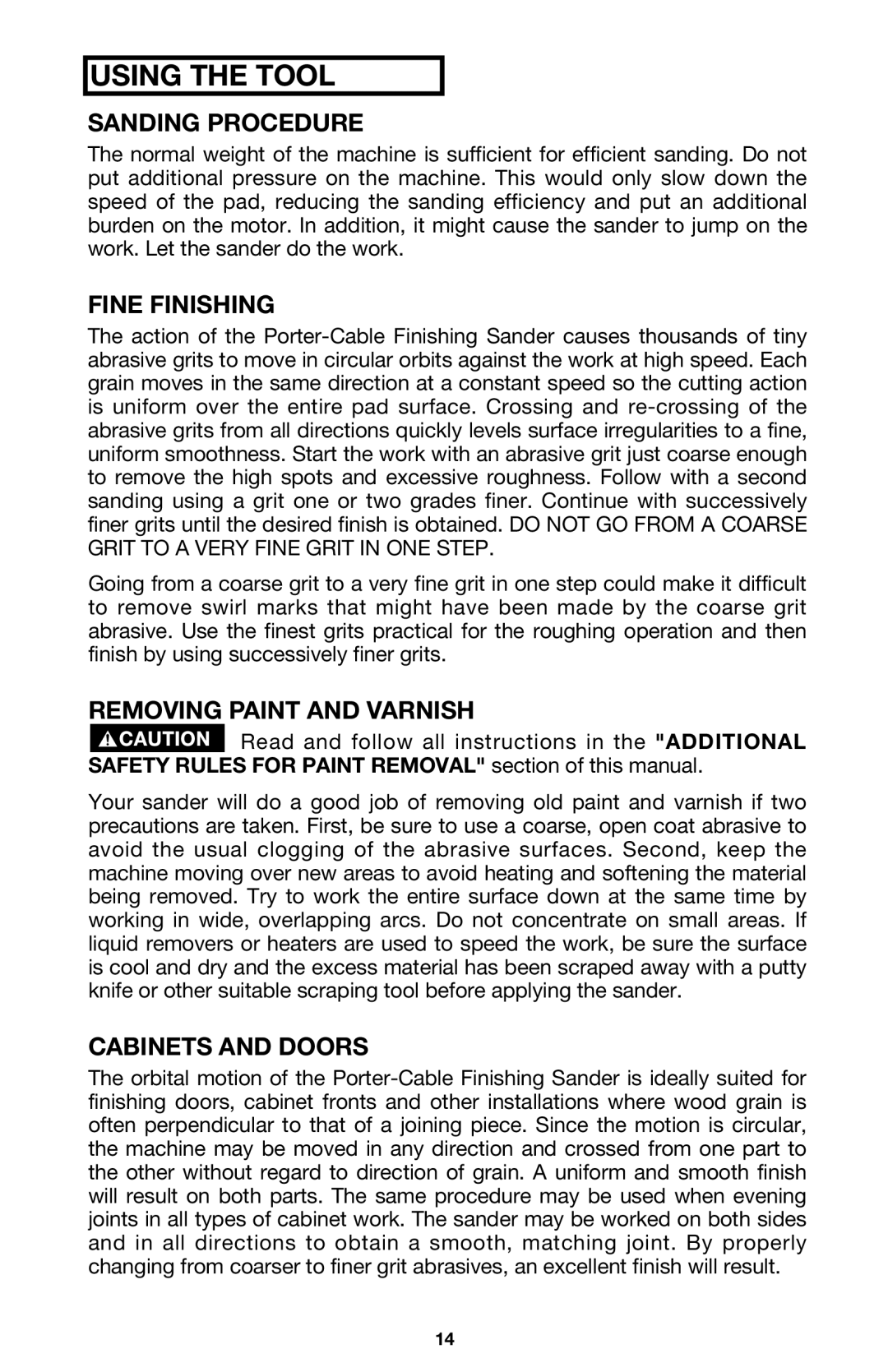USING THE TOOL
SANDING PROCEDURE
The normal weight of the machine is sufficient for efficient sanding. Do not put additional pressure on the machine. This would only slow down the speed of the pad, reducing the sanding efficiency and put an additional burden on the motor. In addition, it might cause the sander to jump on the work. Let the sander do the work.
FINE FINISHING
The action of the
Going from a coarse grit to a very fine grit in one step could make it difficult to remove swirl marks that might have been made by the coarse grit abrasive. Use the finest grits practical for the roughing operation and then finish by using successively finer grits.
REMOVING PAINT AND VARNISH
![]() Read and follow all instructions in the "ADDITIONAL SAFETY RULES FOR PAINT REMOVAL" section of this manual.
Read and follow all instructions in the "ADDITIONAL SAFETY RULES FOR PAINT REMOVAL" section of this manual.
Your sander will do a good job of removing old paint and varnish if two precautions are taken. First, be sure to use a coarse, open coat abrasive to avoid the usual clogging of the abrasive surfaces. Second, keep the machine moving over new areas to avoid heating and softening the material being removed. Try to work the entire surface down at the same time by working in wide, overlapping arcs. Do not concentrate on small areas. If liquid removers or heaters are used to speed the work, be sure the surface is cool and dry and the excess material has been scraped away with a putty knife or other suitable scraping tool before applying the sander.
CABINETS AND DOORS
The orbital motion of the
14
